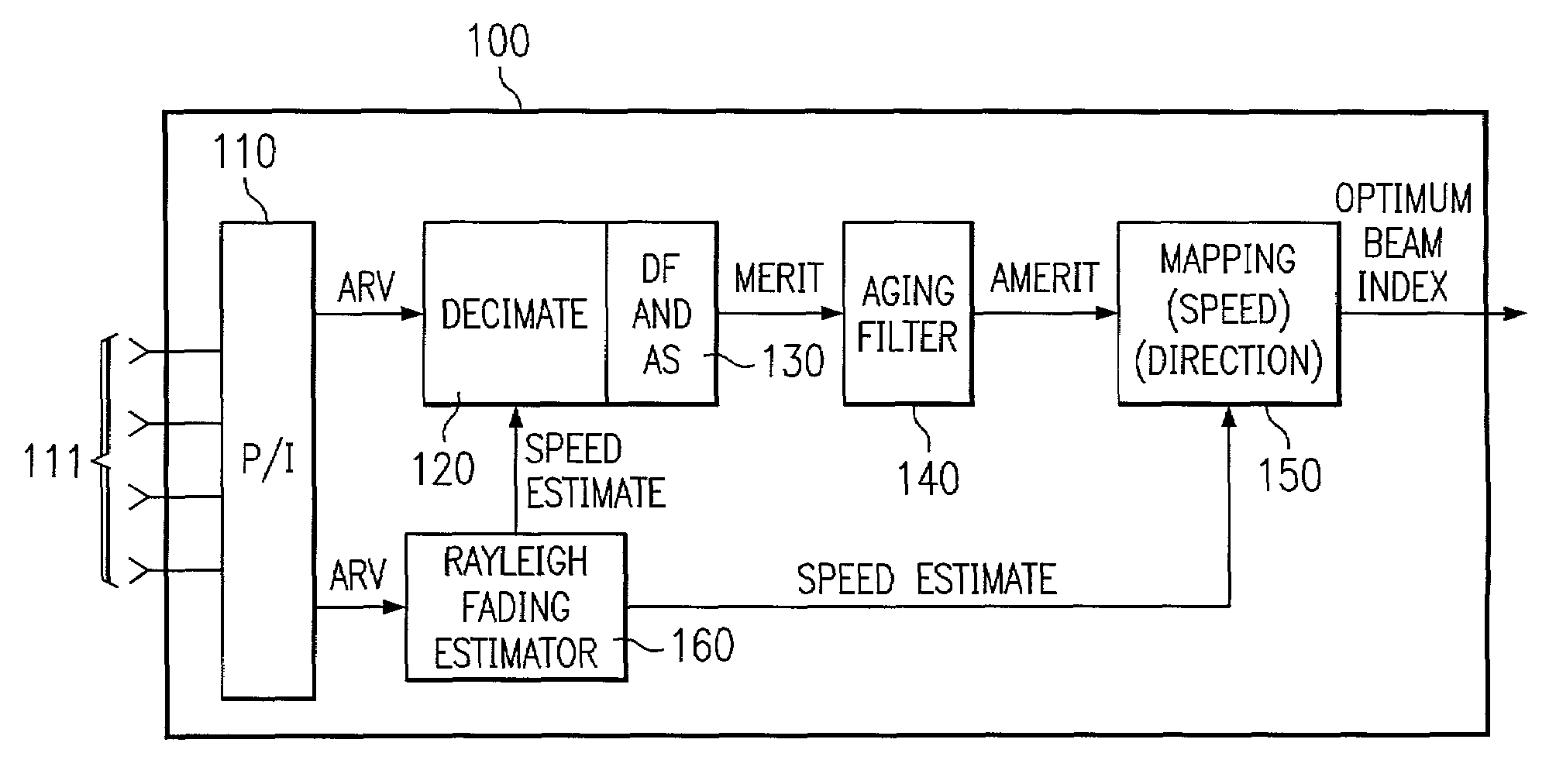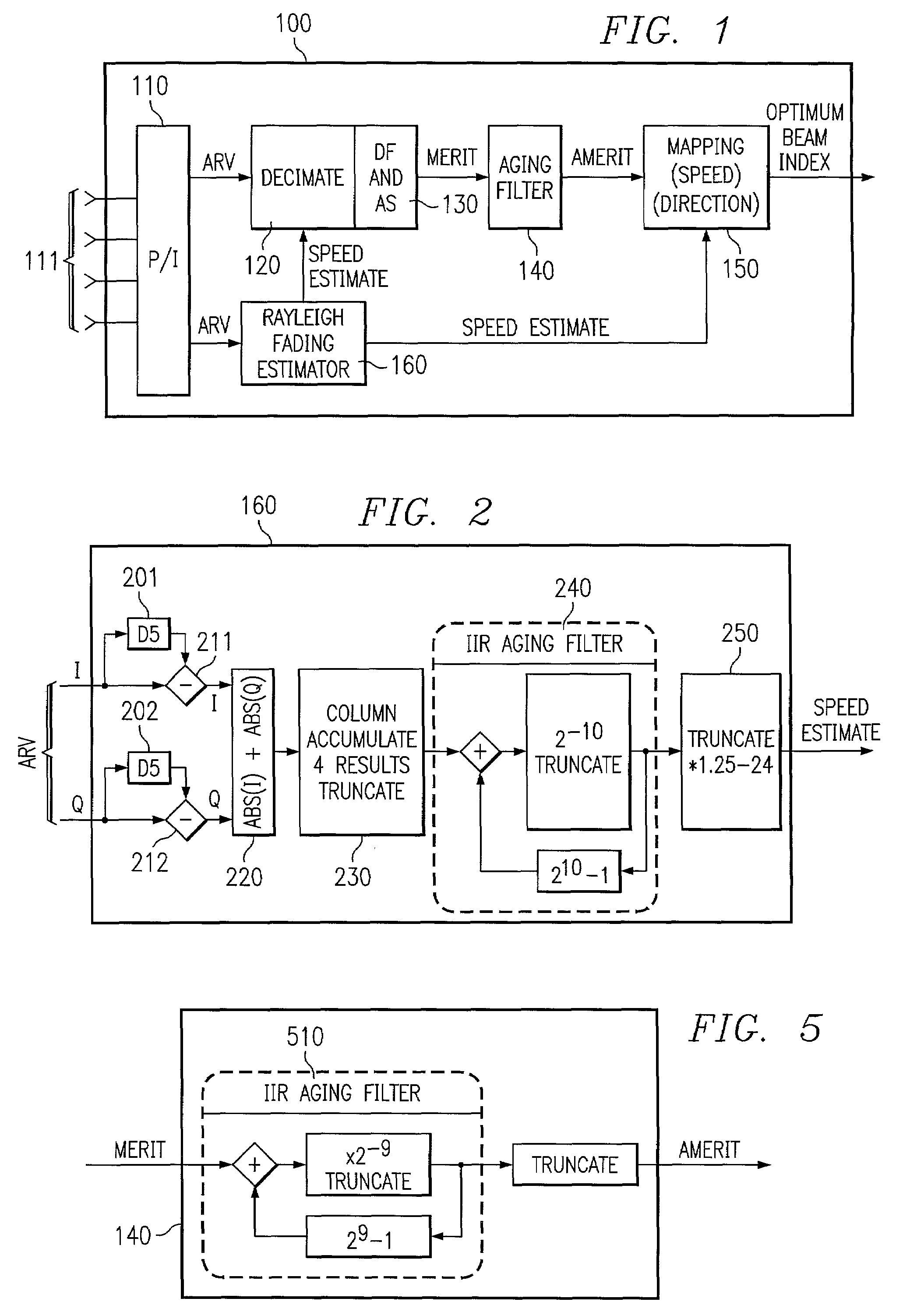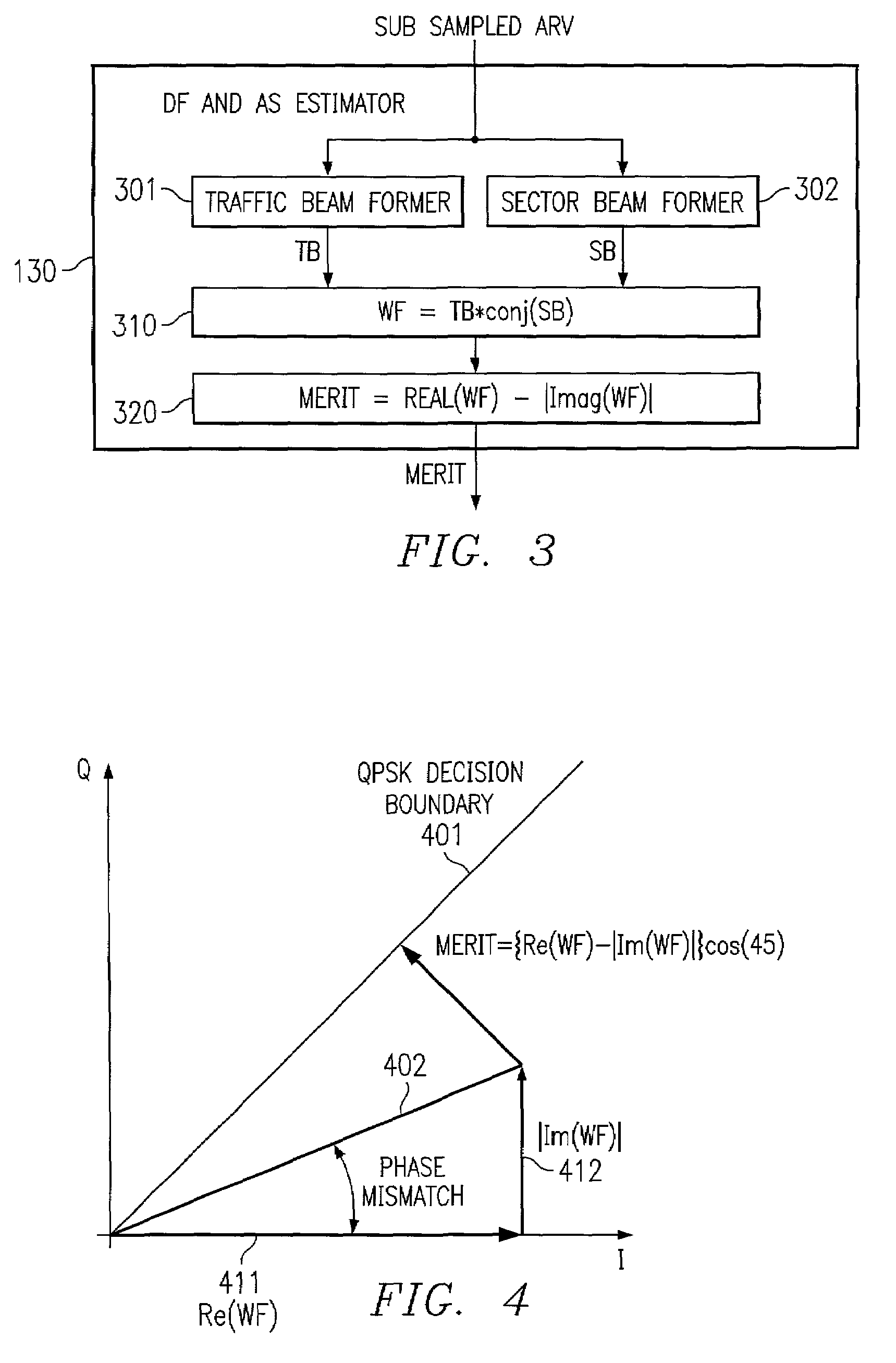System and method for selecting optimized beam configuration
- Summary
- Abstract
- Description
- Claims
- Application Information
AI Technical Summary
Benefits of technology
Problems solved by technology
Method used
Image
Examples
Embodiment Construction
[0030]Directing attention to FIG. 1, a preferred embodiment beam correlator system of the present invention adapted to determine an optimal antenna beam configuration for use in a communication network, such as a cellular or Personal Communication Services (PCS) system, is shown generally as beam correlator 100. According to a preferred embodiment, an optimal antenna beam determined through use of beam correlator 100 is utilized in providing a forward link that results in a least transmit power required to maintain a desired signal quality, such as by maintaining a desired Frame Error Rate (FER). Of course, alternative embodiments of the invention may utilize beam correlator 100 differently, such as for determining reverse link beam configurations, and / or may utilized different metrics than those shown, such as maintaining a desired Bit Error Rate (BER), Receive Signal Strength Indicator (RSSI), Carrier to Interference (C / I) ratio, etcetera.
[0031]Preferred embodiment beam correlator...
PUM
 Login to View More
Login to View More Abstract
Description
Claims
Application Information
 Login to View More
Login to View More - R&D
- Intellectual Property
- Life Sciences
- Materials
- Tech Scout
- Unparalleled Data Quality
- Higher Quality Content
- 60% Fewer Hallucinations
Browse by: Latest US Patents, China's latest patents, Technical Efficacy Thesaurus, Application Domain, Technology Topic, Popular Technical Reports.
© 2025 PatSnap. All rights reserved.Legal|Privacy policy|Modern Slavery Act Transparency Statement|Sitemap|About US| Contact US: help@patsnap.com



